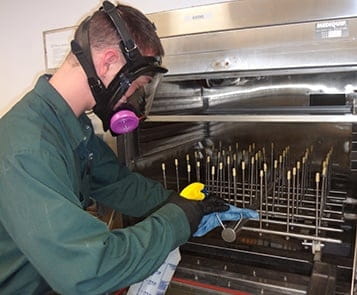Choose Biological Decontamination Contractors Carefully
Biological decontamination is a tedious process that requires technical expertise, careful execution, and thorough disinfection. To avoid return visits, ask your service vendors about their track records. Our decontamination experts and certified industrial hygienists have years of experience with sensitive biological environments.
We provide routine scheduled preventive services or as-needed service. With effective decontamination methods and high attention to detail, we get it right the first time. Our expertise includes:
- Biological contamination investigations
- Mycoplasma decontamination
- Decontamination protocols for various spaces:
- Lab decontamination
- Incubator decontamination
- Cold room decontamination
- Fume hood decontamination
- Biosafety cabinet (BSC) testing, certification, and disinfection
- Animal care facility decontamination
- Biosafety program support
- Sampling and lab analysis
- Work process audits and assessments
- Disinfection programs
- Mold remediation
We Recommend Preventive Biological Decontamination
Avoid costly problems by scheduling periodic testing and preventive cleaning. Preventive measures can:
- Reduce downtime
- Maintain the integrity of cell cultures and specimens
- Keep your lab space and work environment safe, compliant, and healthy
Our goal is to keep you safe, compliant, and operational by maintaining a healthy working space. Call us today to learn more about our approach to biological decontamination.



